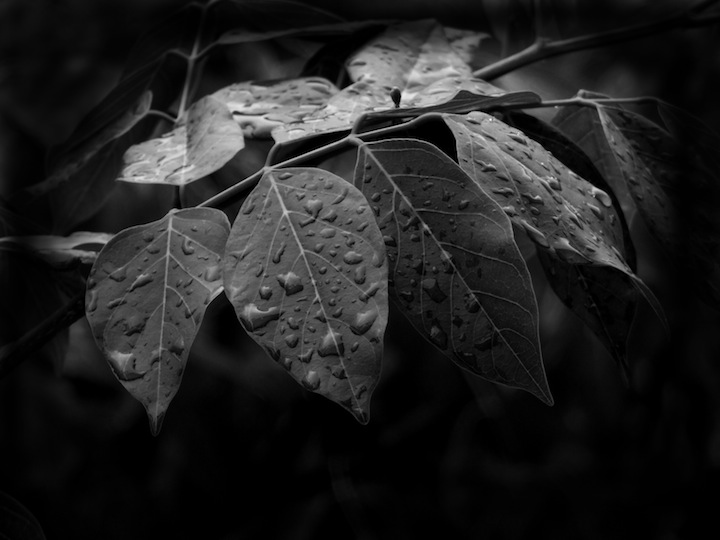I'm standing at the window watching a heavy, late summertime rain fill the air. Early yesterday, bright sun washed out the sky; it hadn't occurred to me that a storm may be right behind.
By and large we at 1AU work in a high-tech world. That means we spend a lot of time around computer monitors and electrical cables and cameras and, of course, endless hours inside. We work by electronic light. We breathe recirculated air.
It almost sounds like life aboard a spacecraft.
But today it's raining, and it occurs to me that the vaguely romantic mood I'm in directly relates to the water falling from the sky. I laugh at myself when I think of how I sat in my car this morning, strategizing for a minute as I tried to think of a way to minimize the soaking I'd get when I opened the door. I considered all of the options, worked out the moves like choreography: sling my shoulder bag securely, then grab the flip-lid coffee cup with right hand while I pocket the car keys with my other. I'd adroitly bump the driver side door shut with my right elbow, and dash for the door, 50 meters across puddle-strewn pavement.
Ready...? "Go!"
Result? I got wet. And then I stood at the door to my office looking out through the glass--dripping, slightly chilled-- and I decided not to be annoyed at all.
Rain falls; winds blow; temperature changes. The natural world speaks, but not to us. It speaks and we may listen in, like passengers in a train terminal listening nonchalantly to a private phone conversation in the chair next to us. The natural world offers food for thought, backdrops for moods, be they bright or melancholy. The natural world is not something to resist. Taken with a measure of grace, it's a touchstone, always surprising, always authentic, often changing, yet reliable and honest every single day.
As artists we should be open to all sorts of influences, from surprising physical experiences and diverse people. As the Japanese filmmaker Akira Kurasowa said, "Artists cannot avert their eyes." Where that comment evokes considerations of social justice, and nuanced political observations, and moments of transformation, I'm sitting here with rainwater on my glasses recognizing how it also suggests that we not lose touch with sources of inspiration directly enveloping us. Sometimes it's rain; sometimes it's the act of band-aiding a paper cut earned when you rush to refill the aging inkjet printer in the corner. Inspiration comes from observation, and observation comes from wanting to be a participant in your own life rather than a spectator.
Today the sound of rain--that low, white noise vibration––becomes a natural soundtrack to the movie of my day. But so do bird songs in sunlit afternoons, and the mournful whistles of late autumn breezes as they coax me to pull the sides of my collar closer together. Sights, sounds, feelings of air on skin: the natural world is raw material for art. And as regular readers of this column know, I believe art is the natural byproduct of a vibrant life.
MS

